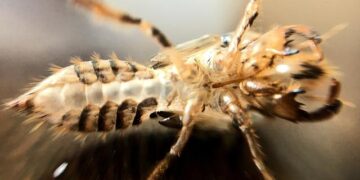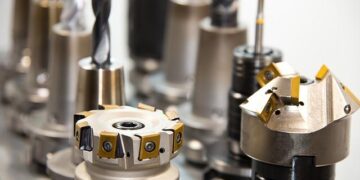The European Space Agency (ESA) is breaking new ground in the study of condensation phenomena with recent experiments that challenge conventional understanding of gravity’s role in fluid behavior. By observing how condensation forms and moves in microgravity environments, ESA researchers are uncovering insights that could revolutionize thermal management systems both in space and on Earth. This innovative research not only broadens our scientific knowledge but also paves the way for advancements in spacecraft design and energy-efficient technologies.
Condensation Behavior Challenged in Microgravity Experiments
In a groundbreaking series of microgravity experiments aboard the International Space Station, scientists have observed condensation phenomena that defy traditional Earth-bound theories. Without the pull of gravity, droplets behave in unexpected ways, forming spherical clusters and merging patterns that challenge existing models of heat transfer and surface tension. These findings open new possibilities for improving thermal management systems in space habitats and could revolutionize fluid dynamics research.
Key observations from the experiments include:
- Droplet formation occurring uniformly in suspended states rather than gravity-driven runoff.
- Enhanced coalescence rates, leading to larger droplet clusters without influence from gravity.
- Unexpected temperature distribution across condensate surfaces, indicating altered thermal gradients.
| Parameter | Earth Gravity | Microgravity |
|---|---|---|
| Droplet Shape | Flattened, pear-shaped | Perfectly spherical |
| Coalescence Speed | Moderate | Accelerated |
| Runoff Behavior | Downward flow | Suspended clusters |
European Space Agency Unveils Novel Insights into Fluid Dynamics in Space
In a groundbreaking experiment aboard the International Space Station, researchers from the European Space Agency have observed how fluids behave under microgravity, challenging long-standing terrestrial assumptions. Unlike on Earth, where gravity dictates the movement and condensation patterns of liquids, the microgravity environment allows droplets to form and merge in unprecedented ways. Using specialized instrumentation, the team captured detailed data on how condensation defies gravitational pull, shedding light on processes that could revolutionize cooling systems in spacecraft and enhance fluid management in future long-duration missions.
Key findings of the experiment include:
- Condensate droplets coalesce more rapidly, forming spherical shapes without gravitational distortion.
- Fluid films redistribute uniformly across surfaces, enhancing thermal transfer efficiency.
- Unexpected oscillations in fluid layers could influence spacecraft design to mitigate system failures.
| Parameter | Earth Gravity | Microgravity (ISS) |
|---|---|---|
| Condensate Shape | Flattened, irregular | Perfect spheres |
| Droplet Coalescence Rate | Slow | Rapid |
| Thermal Transfer Efficiency | Moderate | Enhanced |
Experts Recommend Leveraging Findings for Improved Spacecraft Thermal Management
Leading specialists in spacecraft engineering emphasize the critical importance of applying the latest condensation behavior insights to enhance thermal control systems. These findings reveal how liquid droplets can defy gravity in microgravity environments, challenging traditional heat exchange assumptions. By integrating these newly observed phenomena, spacecraft designers can reduce the risk of thermal inefficiencies, which often lead to equipment malfunctions during extended missions.
Key recommendations from the experts focus on:
- Redesigning heat exchanger surfaces to accommodate irregular droplet formations.
- Incorporating active control mechanisms that respond dynamically to condensation patterns.
- Utilizing advanced simulation models that predict fluid behavior beyond Earth’s gravity.
| Thermal Management Aspect | Conventional Method | Recommended Adaptation |
|---|---|---|
| Condensation Control | Gravity-based drainage | Surface tension manipulation |
| Heat Exchange Efficiency | Static cooling elements | Adaptive droplet shedding |
| System Monitoring | Periodic inspections | Real-time fluid dynamics sensors |
Key Takeaways
As the European Space Agency continues to push the boundaries of our understanding of physical phenomena, the study of condensation defying gravity offers intriguing insights with potential applications ranging from advanced water collection systems to improved thermal management in spacecraft. This breakthrough not only challenges conventional scientific assumptions but also highlights the innovative spirit driving space research. Stay tuned as ESA’s ongoing experiments promise to reveal more about the complex interplay of forces in microgravity environments, paving the way for new technologies both in space and here on Earth.






























